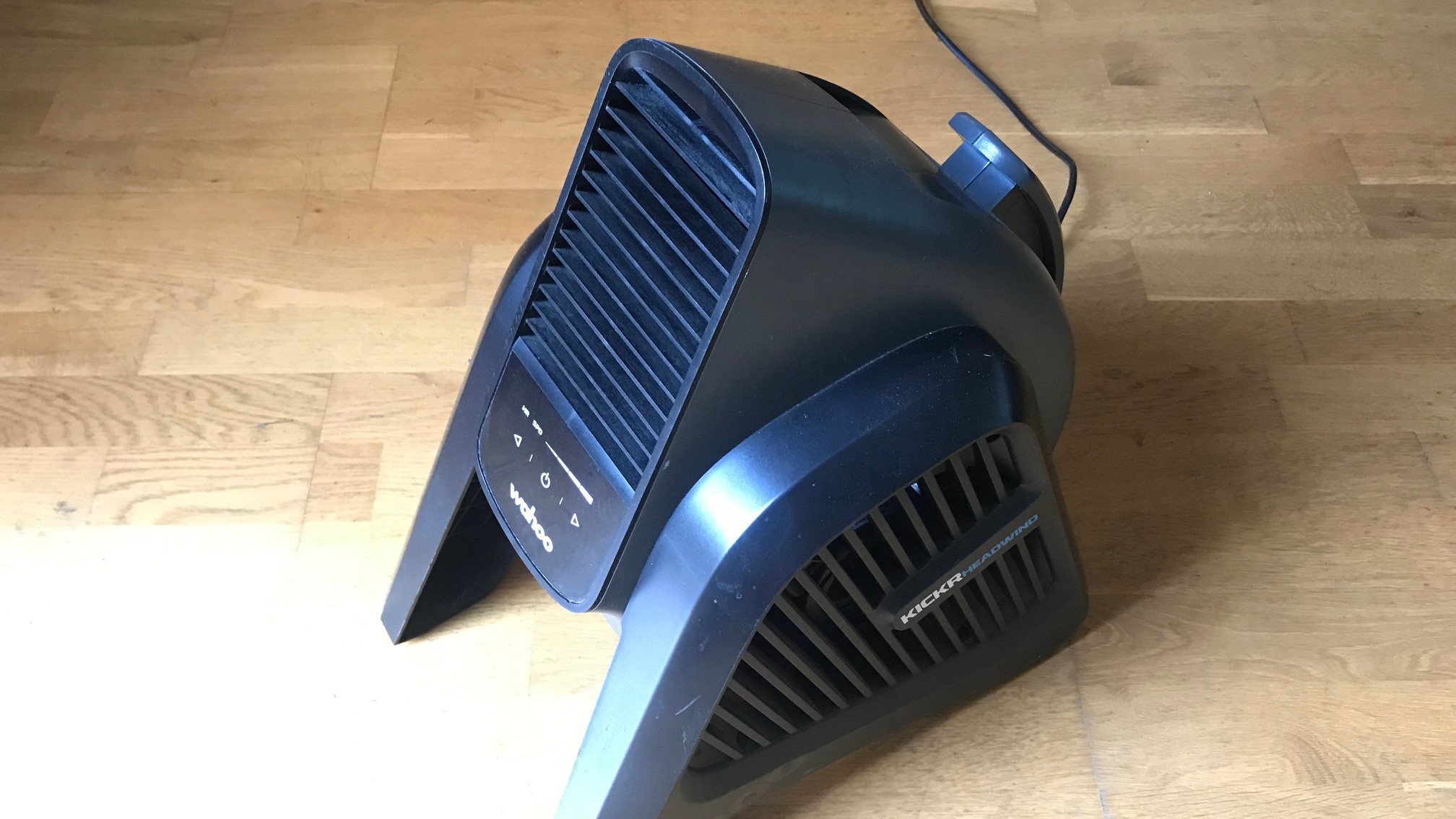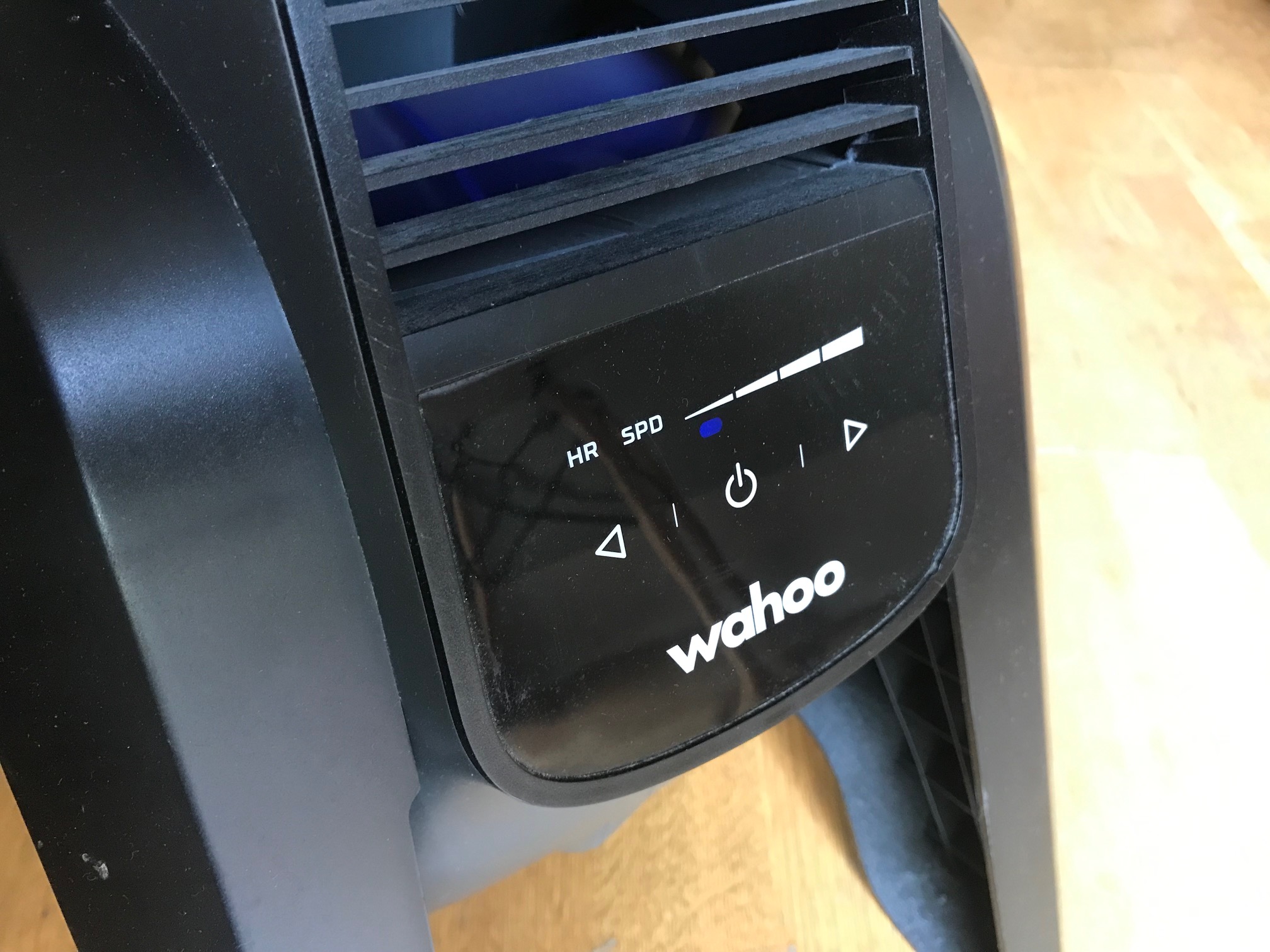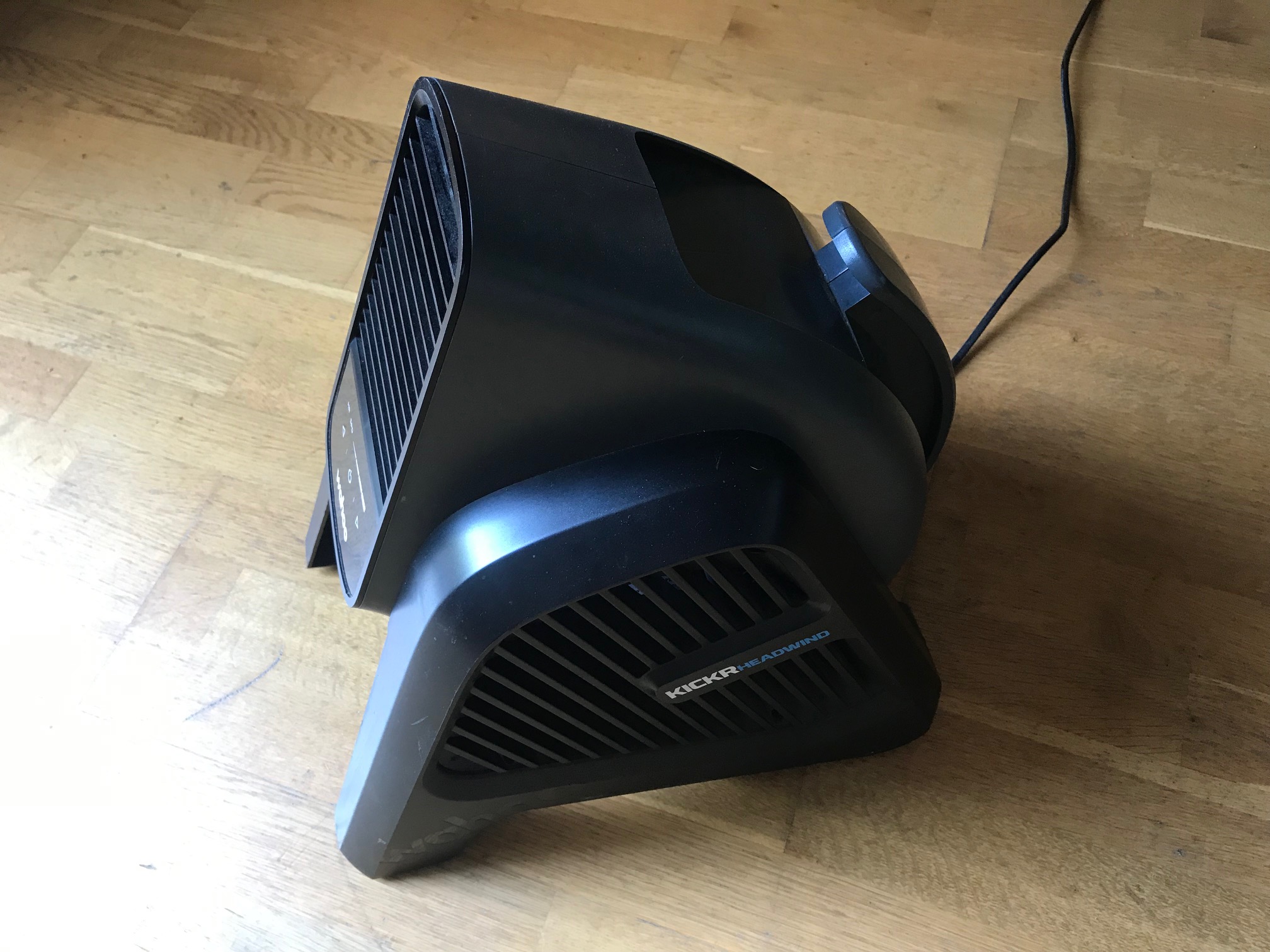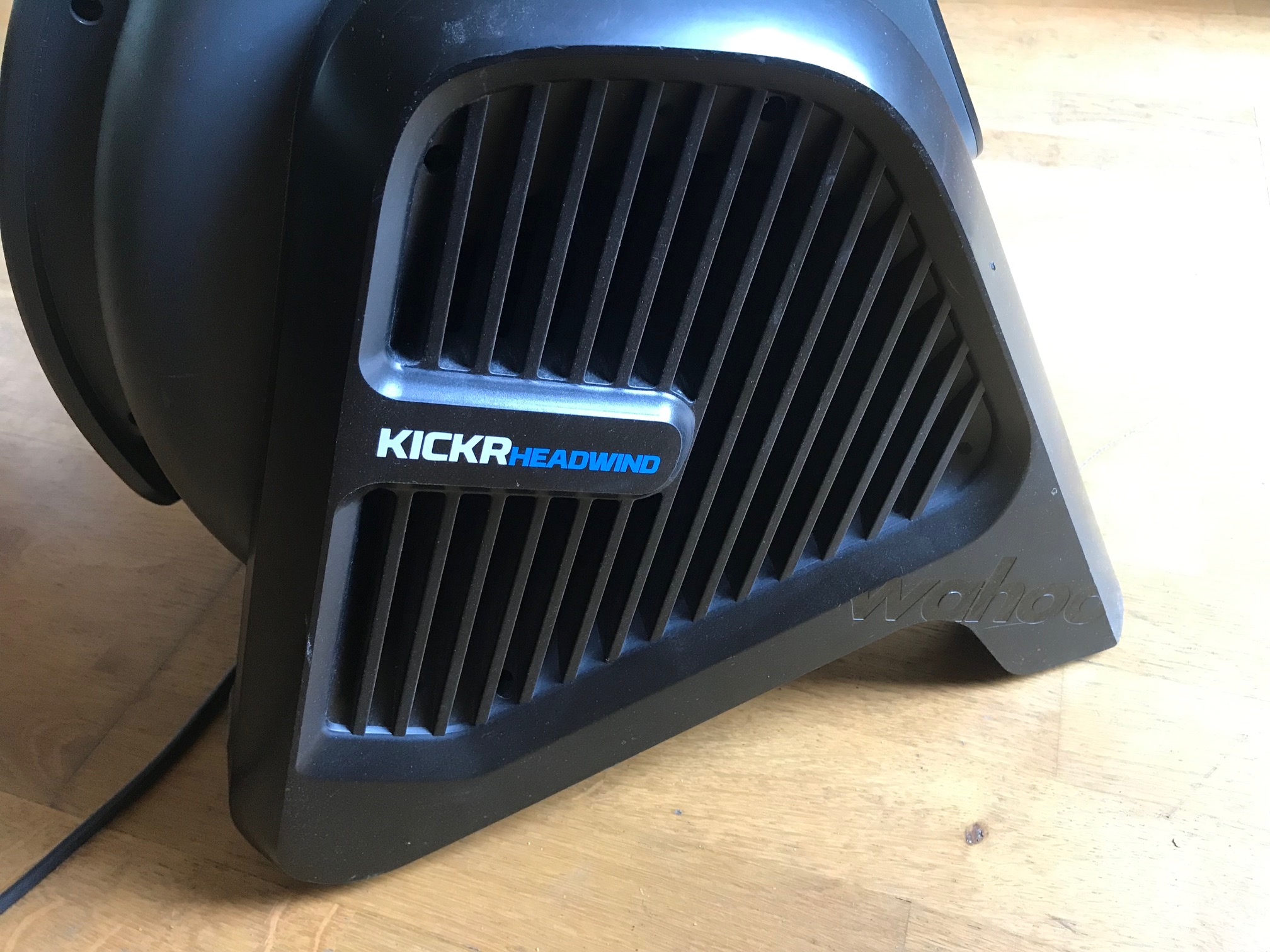Wahoo Kickr Headwind smart fan review - smart, cool but expensive
A fan that speeds up as your heart rate increases is an excellent idea - but you do pay for the tech

A fan that automatically adjusts its speed according to your heart rate is a great idea, and Wahoo has done a great job of realising it with the Kickr Headwind. But if your chest strap is at all unreliable you need to control it via the Wahoo app to avoid overcooking. The fan itself can direct a powerful jet of air that cools very effectively, but due to the highly targeted blast its legs could do with a bit more adjustability so it can be more precisely positioned. At over £200/$200 it's expensive for a fan, but with a good chest strap the heart rate control function does enhance the indoor training experience.
-
+
Heart rate control function
-
+
Powerful blast
-
+
Reliable
-
+
Sleek-looking design
-
-
Expensive
-
-
Heart rate control depends on reliable chest strap
-
-
Legs need more adjustability for better airflow positioning
You can trust Cycling Weekly.

You don't normally expect a fan to cost well over £200 or almost $300, but the Wahoo Kickr Headwind isn’t just any old fan - it’s the world’s first smart fan.
What makes it smart is its ability to pair with sensors or the Wahoo app so that you can set the level of airflow to change automatically according to how fast you’re going (in the virtual training world), how many bpm your heart is doing or you can control it remotely using a paired smartphone. Or if you want to set it off before you get onto the turbo trainer to start your workout, you can do it manually on the front of the unit.

Wahoo says the fan can mimic speeds of over 30mph and that it has a ‘Targeted Airflow Pattern’ that mirrors the shape of a cyclist’s body while riding.
I was a bit sceptical - as anyone would be, since you can pick up a powerful fan with a remote control for less than half the price - but still intrigued in particular by the ability of the Wahoo Headwind to blast more air as heart rate increases. If you do longish time trial intervals (as I do) you tend to seriously overheat towards the end of them unless you’re willing to freeze during your ‘warm-up’.
Wahoo Kickr Headwind setup and in use
I paired the Headwind directly with my Wahoo Tickr chest strap - very easy, just needing doing once and from then on it remembers the sensor and pairs automatically each time it’s switched on and you select heart rate control. Since it is BLE and ANT+ compatible it will pair with any chest strap or trainer and not just Wahoo products.
So sure enough, a warm-up becomes exactly that, and the fan picks up speed the harder you work. It’s not perfect since it slows down in between intervals as your heart rate drops while core temperature remains high - just when you could do with even more air - but that would require a further level of smartness and I’m not going to mark the Wahoo down for not being at that point just yet. However, it must be possible to build in a delay to the fan speed dropping while ensuring it tracks heart rate without a delay on the way up?

Heart rate is my preferred mode of fan speed control, but it of course depends on the heart rate monitor strap working properly. I've recently had a few issues with my Wahoo Tickr strap. I won't go into those here, but it can 'flatline' somewhere around 120bpm when the wattage in the interval I'm doing is ramping up with my heart rate following close behind. Sometimes the HRM wakes up and the fan roars into action like a Spitfire being scrambled, but other times not. The battery isn't the issue and the software is up to date.
Controlling the fan speed via the Wahoo Fitness app gets around the problem of an unreliable chest strap. I have a windowsill next to my Wattbike and it's easy to put the phone on it and operate the slider that controls fan speed as required.
As for the airflow itself, it’s very directed, as ‘Targeted Airflow Pattern’ promises, but I’d actually prefer it to hit a wider area. The problem obviously is that if it was more dispersed it wouldn’t be quite as powerful.

Additionally I found I needed to stack the front up on some books to aim it up at my chest and face, otherwise it’s too low. It could do with some adjustable legs at the front so that the books aren’t necessary.
Having said that, on its highest setting and assuming you've aimed it correctly at your face and chest, it is very cooling. I have such faith in it that during the hottest day in June I trained indoors as I knew I'd stay cooler than riding outside.
There are fold-out legs at the rear that are presumably for using with the Wahoo Kickr Desk, with which it's compatible. If you thought £229.99 was a lot to pay for a fan, that's also the price of the Kickr Desk. So I'm sticking with jacking the front up on some books and putting my phone on the windowsill.
I never use the speed setting - it might be realistic to have more air the faster you’re going (virtually) but I'm not the first reviewer to point out that to have less air once you slow down on a steep climb makes it a little pointless.
Value and conclusion
So although it does still have a few development areas and it’s very expensive - bear in mind it’s the world’s first - I still count myself as a fan (sorry) and would say it's probably worth it for its heart rate setting, especially if you do a lot of indoor training.
I've been using the Wahoo Kickr Headwind for a good few months and have found it to be completely reliable: the fan can't be blamed for a Tickr strap that has a mind of its own. When I have a reliable heart rate monitor I would say it absolutely enhances the training experience to have a fan accelerate automatically as you work harder.

Thank you for reading 20 articles this month* Join now for unlimited access
Enjoy your first month for just £1 / $1 / €1
*Read 5 free articles per month without a subscription

Join now for unlimited access
Try first month for just £1 / $1 / €1
Get The Leadout Newsletter
The latest race content, interviews, features, reviews and expert buying guides, direct to your inbox!
Simon Smythe is a hugely experienced cycling tech writer, who has been writing for Cycling Weekly since 2003. Until recently he was our senior tech writer. In his cycling career Simon has mostly focused on time trialling with a national medal, a few open wins and his club's 30-mile record in his palmares. These days he spends most of his time testing road bikes, or on a tandem doing the school run with his younger son.
-
 A bike rack with an app? Wahoo’s latest, and a hub silencer – Sea Otter Classic tech highlights, Part 2
A bike rack with an app? Wahoo’s latest, and a hub silencer – Sea Otter Classic tech highlights, Part 2A few standout pieces of gear from North America's biggest bike gathering
By Anne-Marije Rook Published
-
 Cycling's riders need more protection from mindless 'fans' at races to avoid another Mathieu van der Poel Paris-Roubaix bottle incident
Cycling's riders need more protection from mindless 'fans' at races to avoid another Mathieu van der Poel Paris-Roubaix bottle incidentCycling's authorities must do everything within their power to prevent spectators from assaulting riders
By Tom Thewlis Published
-
 Man hands himself in to Belgian police after throwing full water bottle at Mathieu van der Poel during Paris-Roubaix
Man hands himself in to Belgian police after throwing full water bottle at Mathieu van der Poel during Paris-Roubaix30-year-old was on Templeuve-en-Pévèle cobbled sector when television pictures showed the bottle hitting him in the face
By Tom Thewlis Published